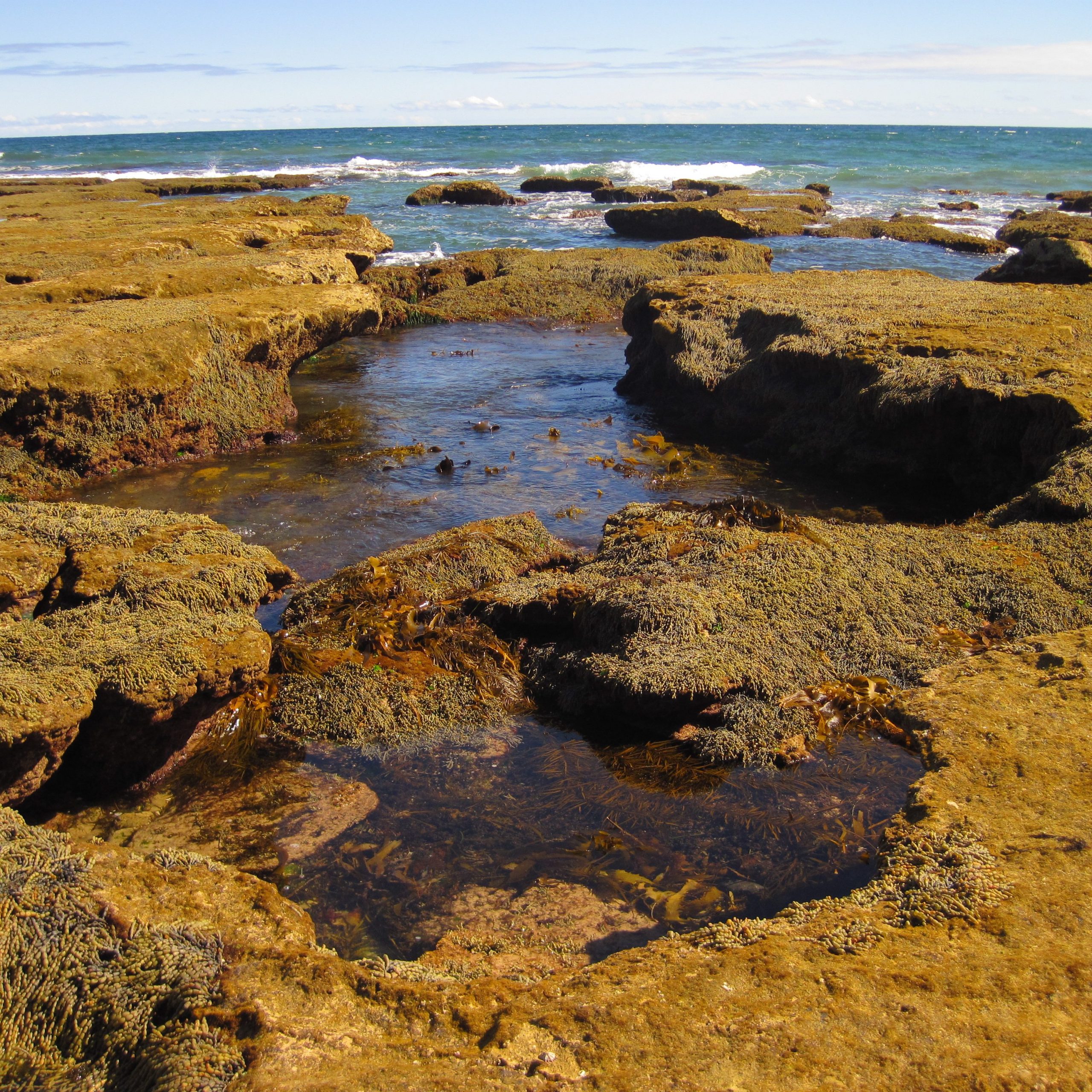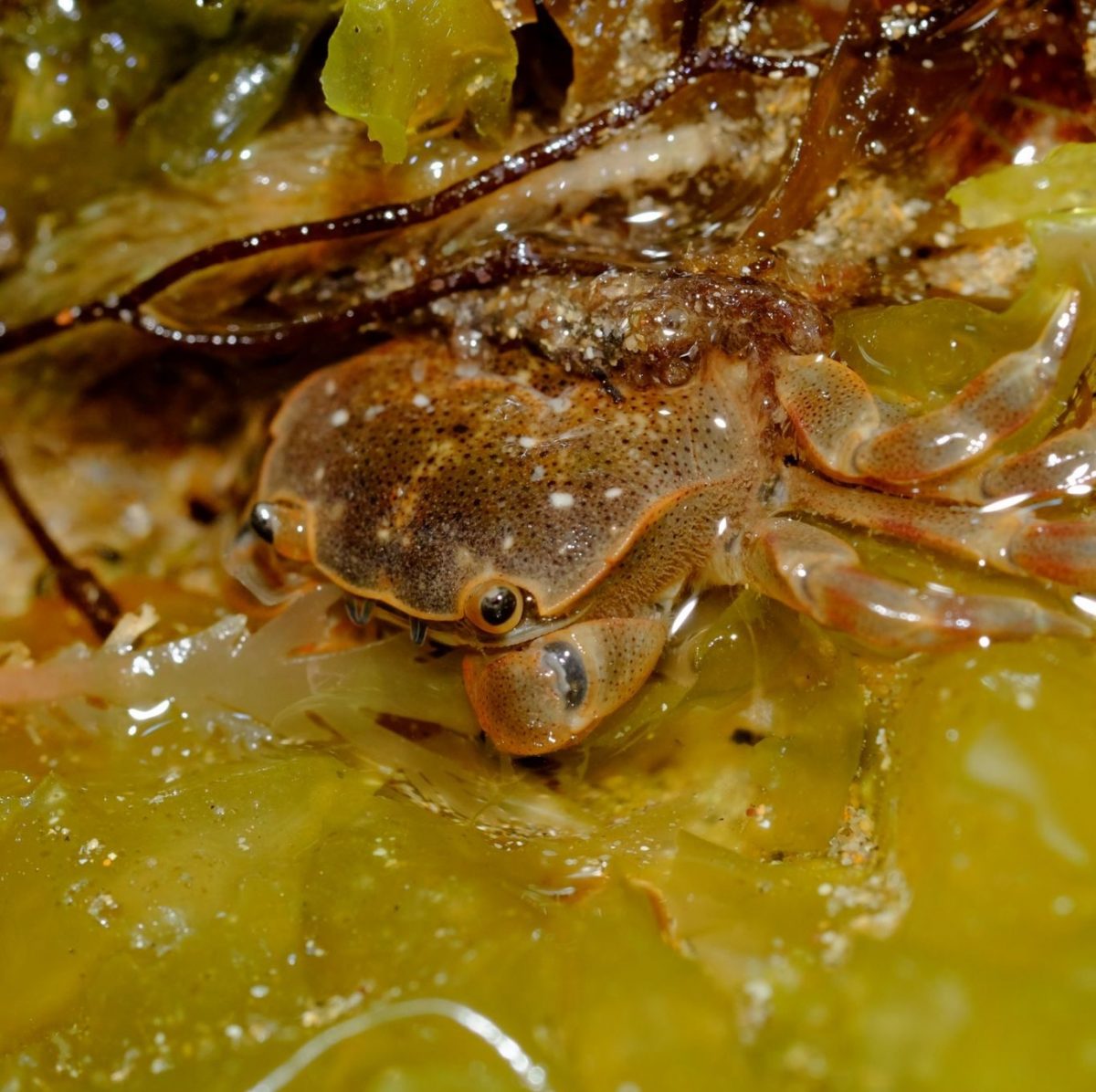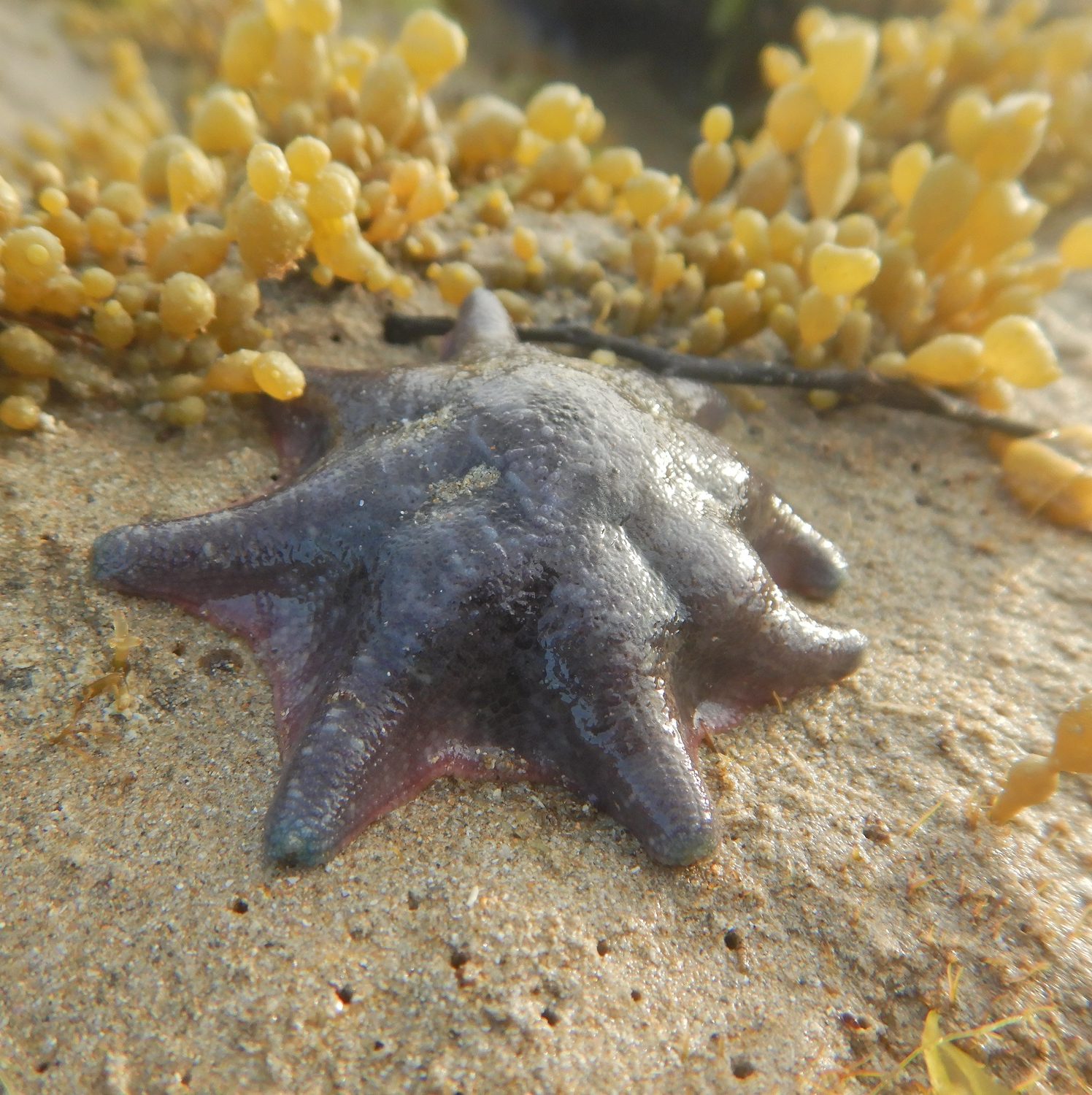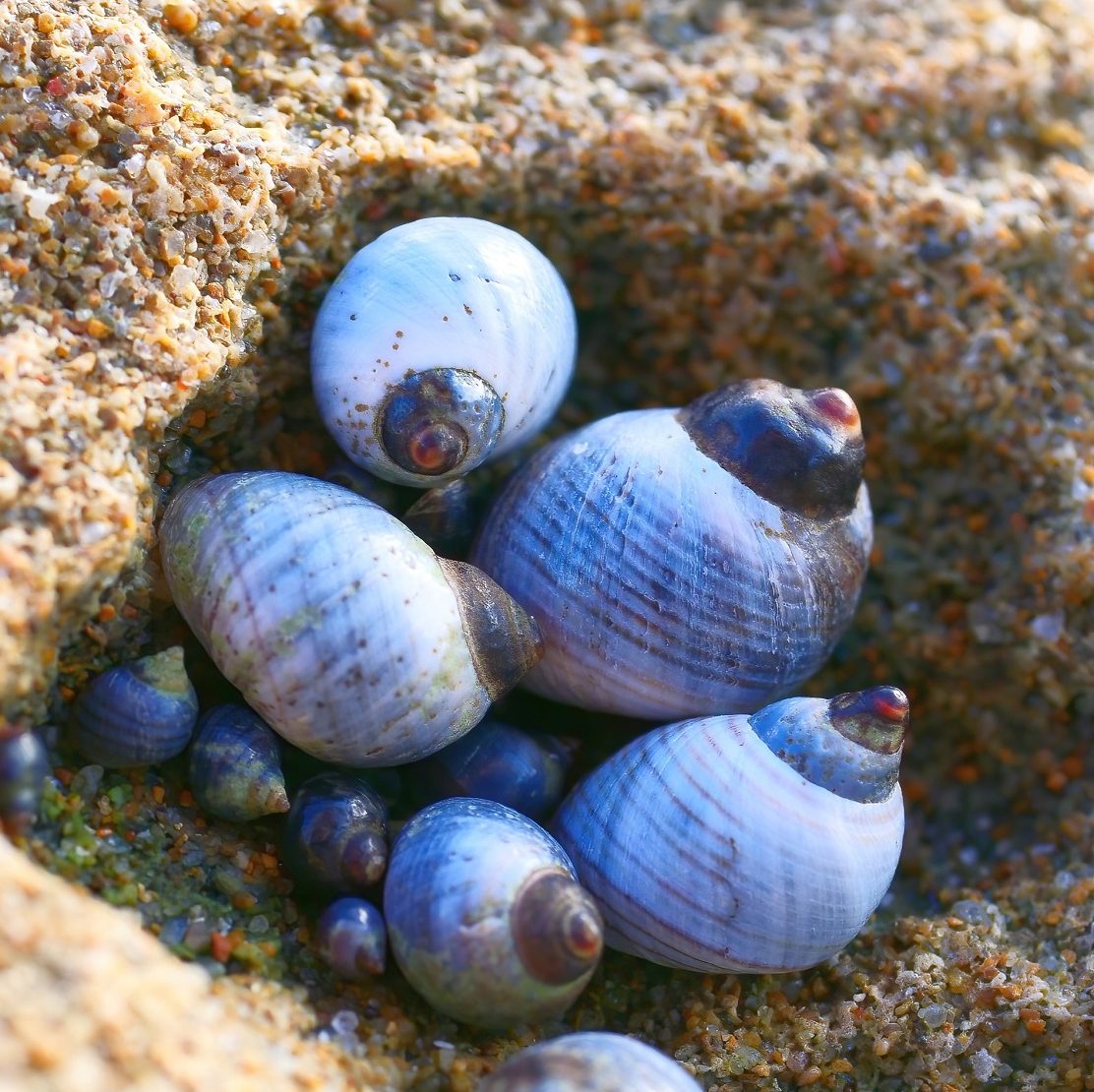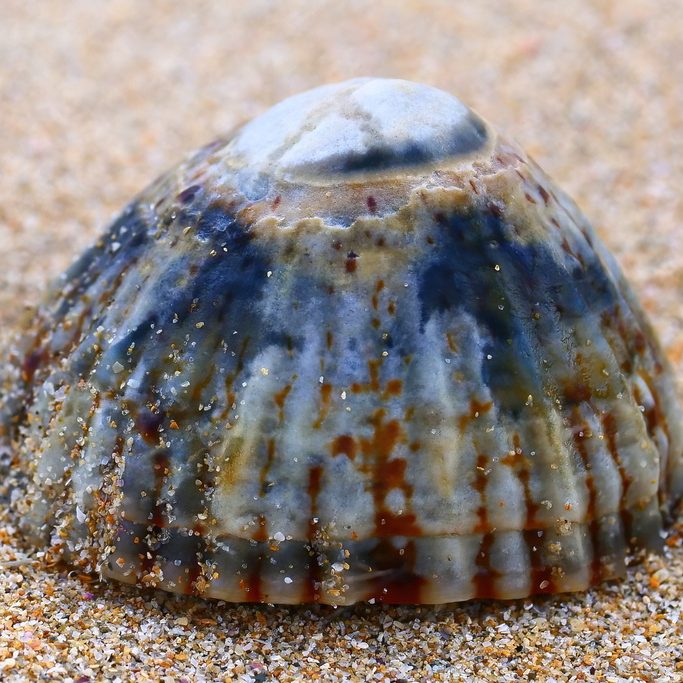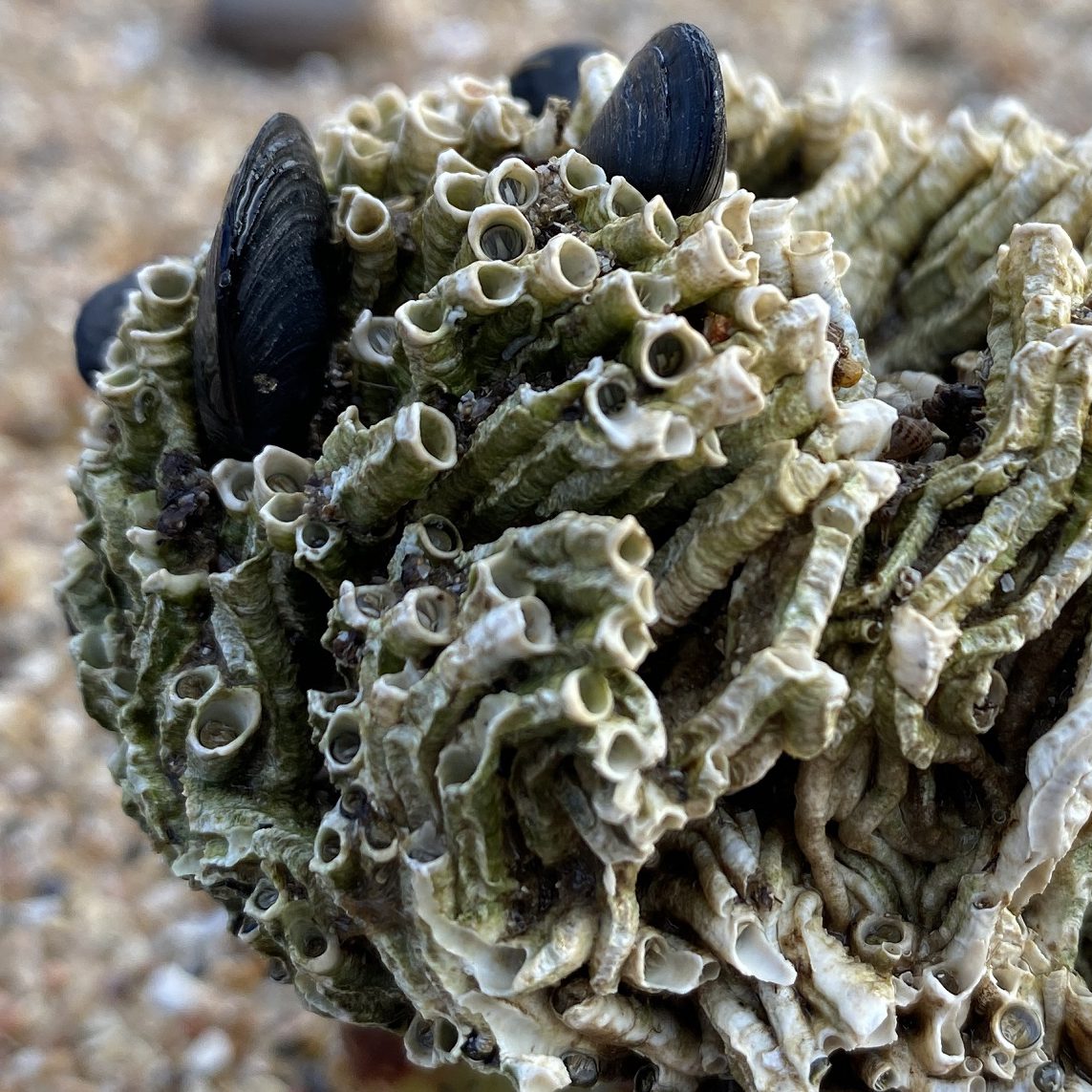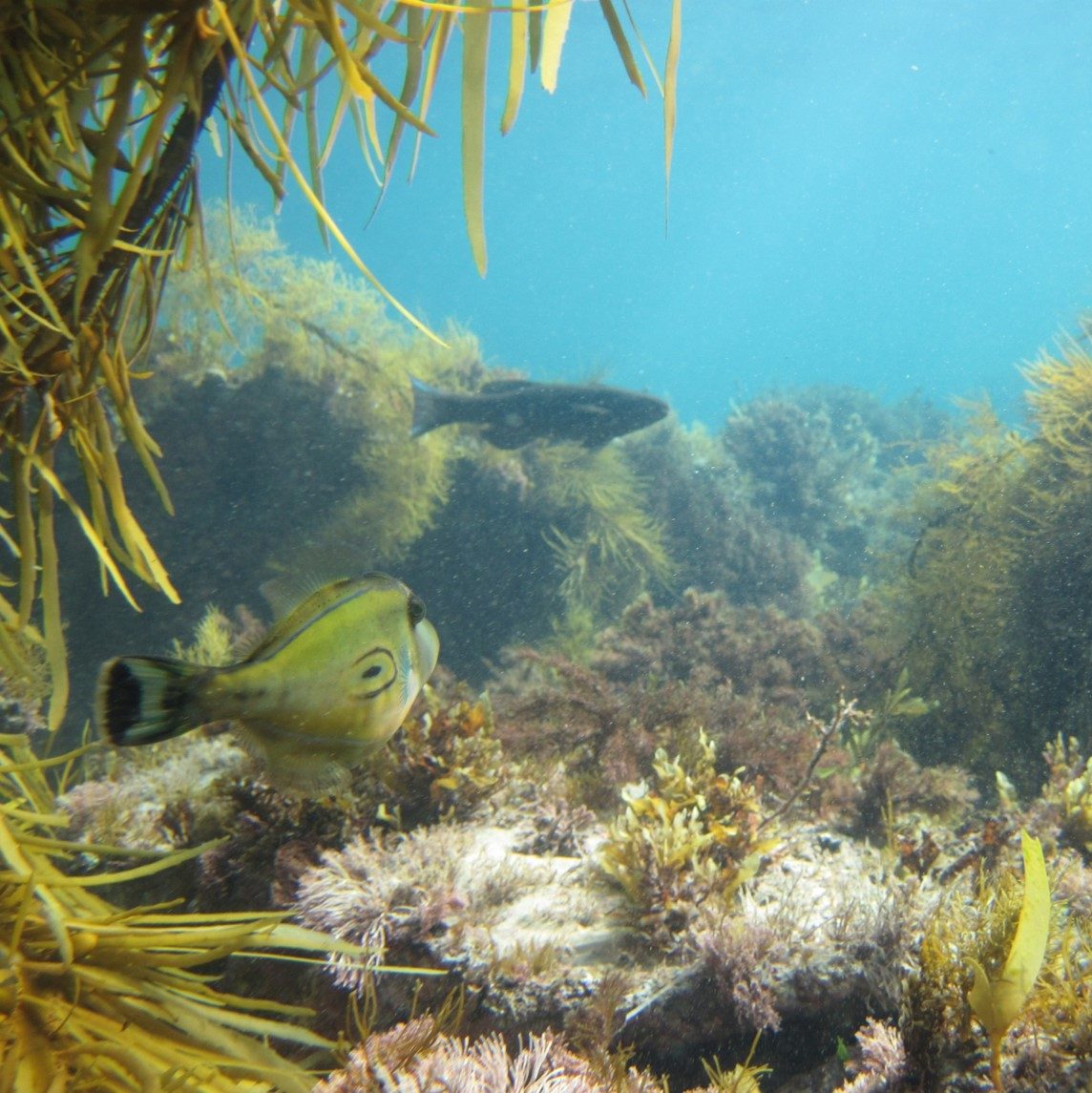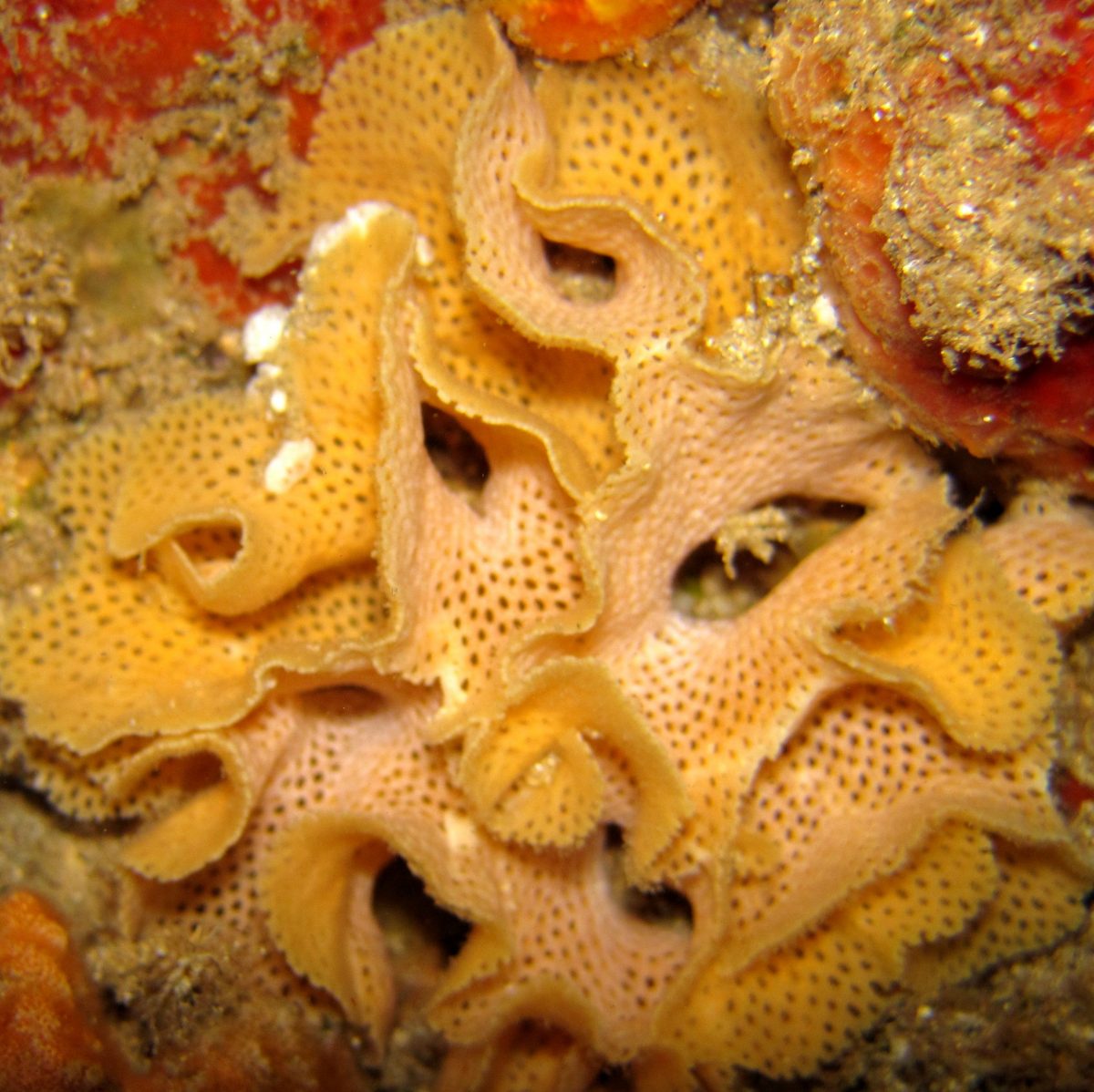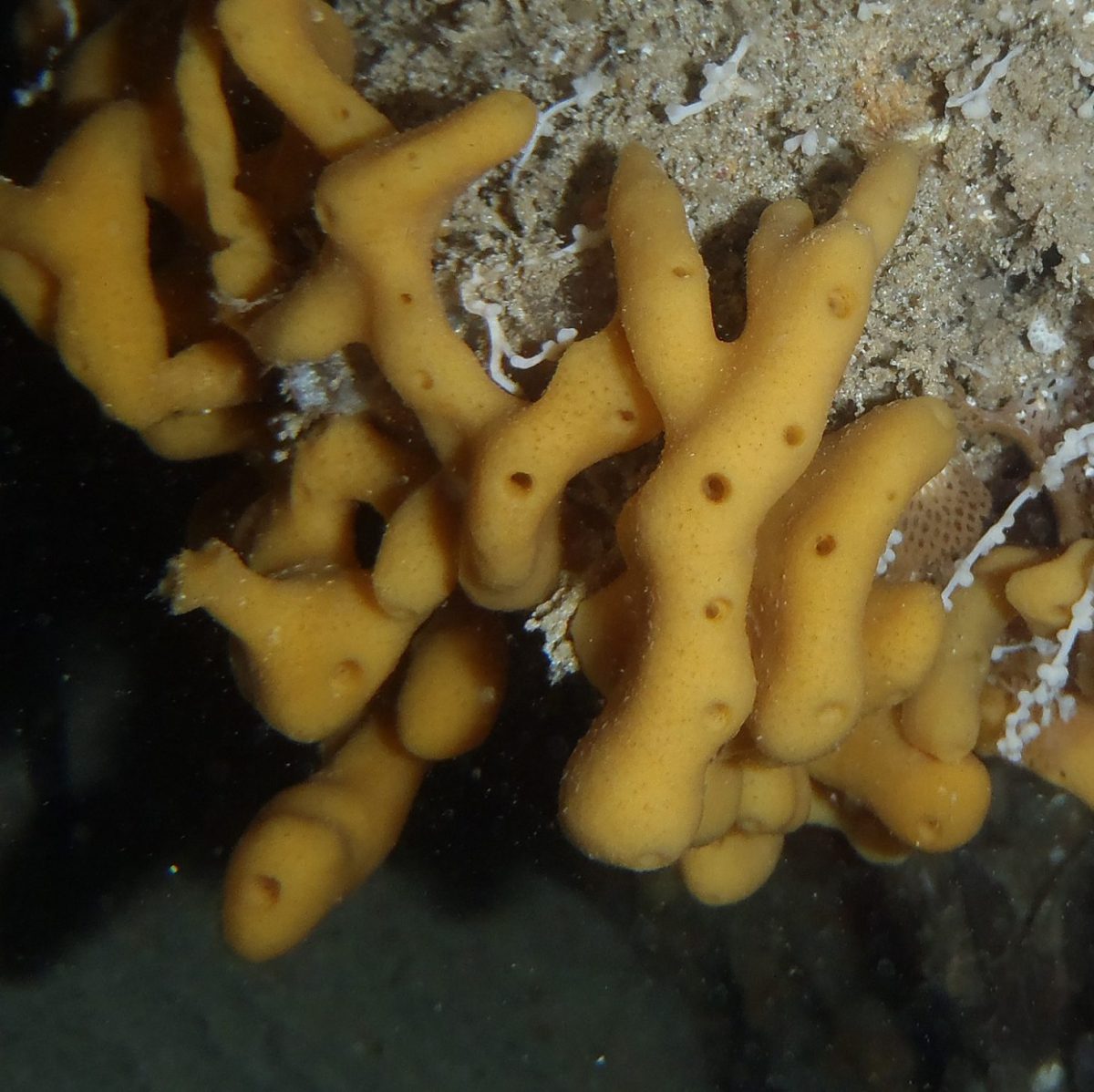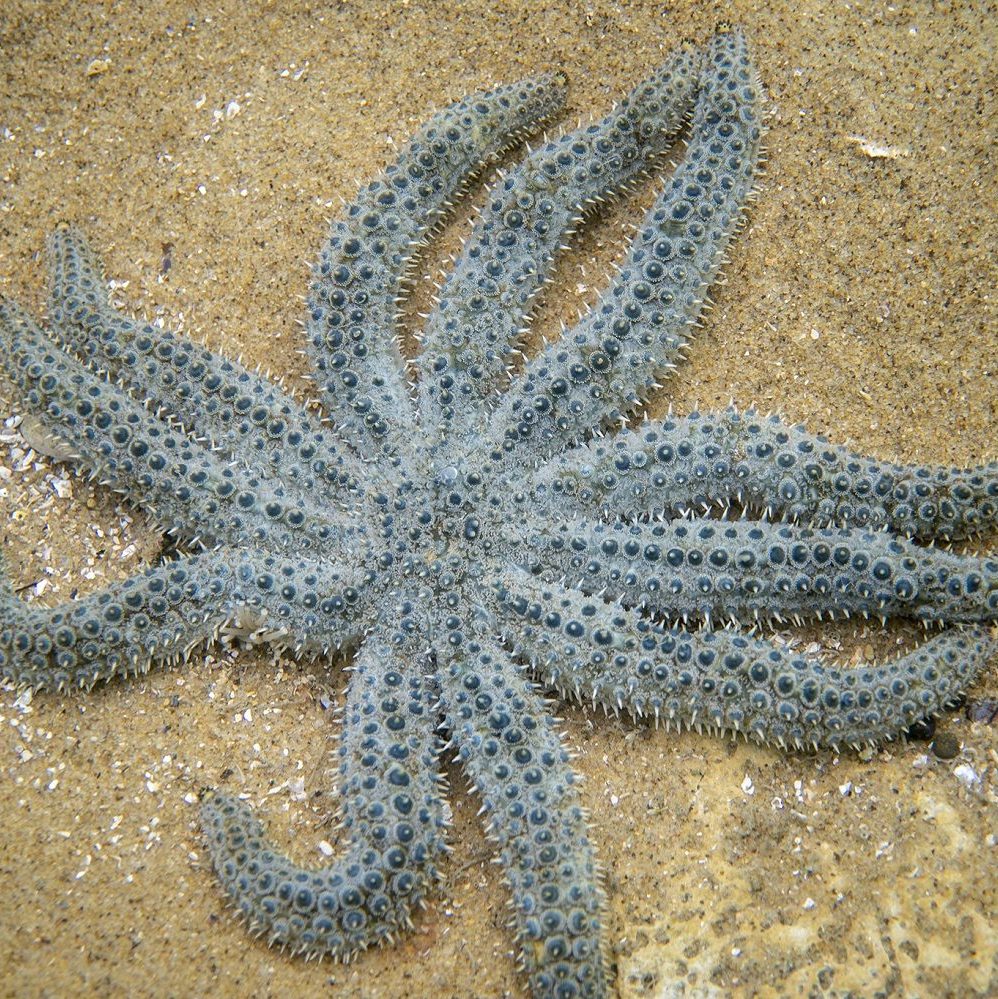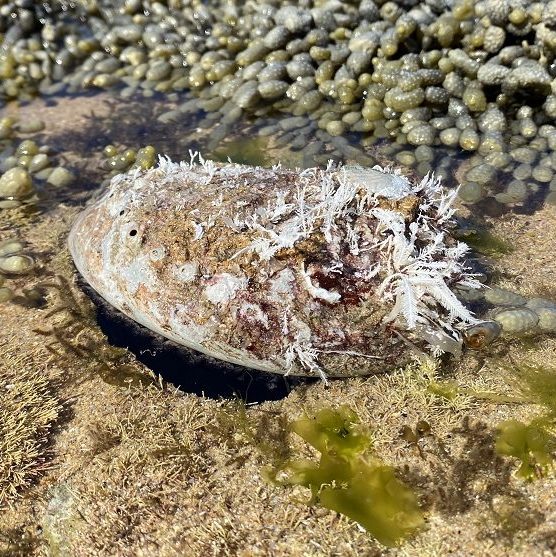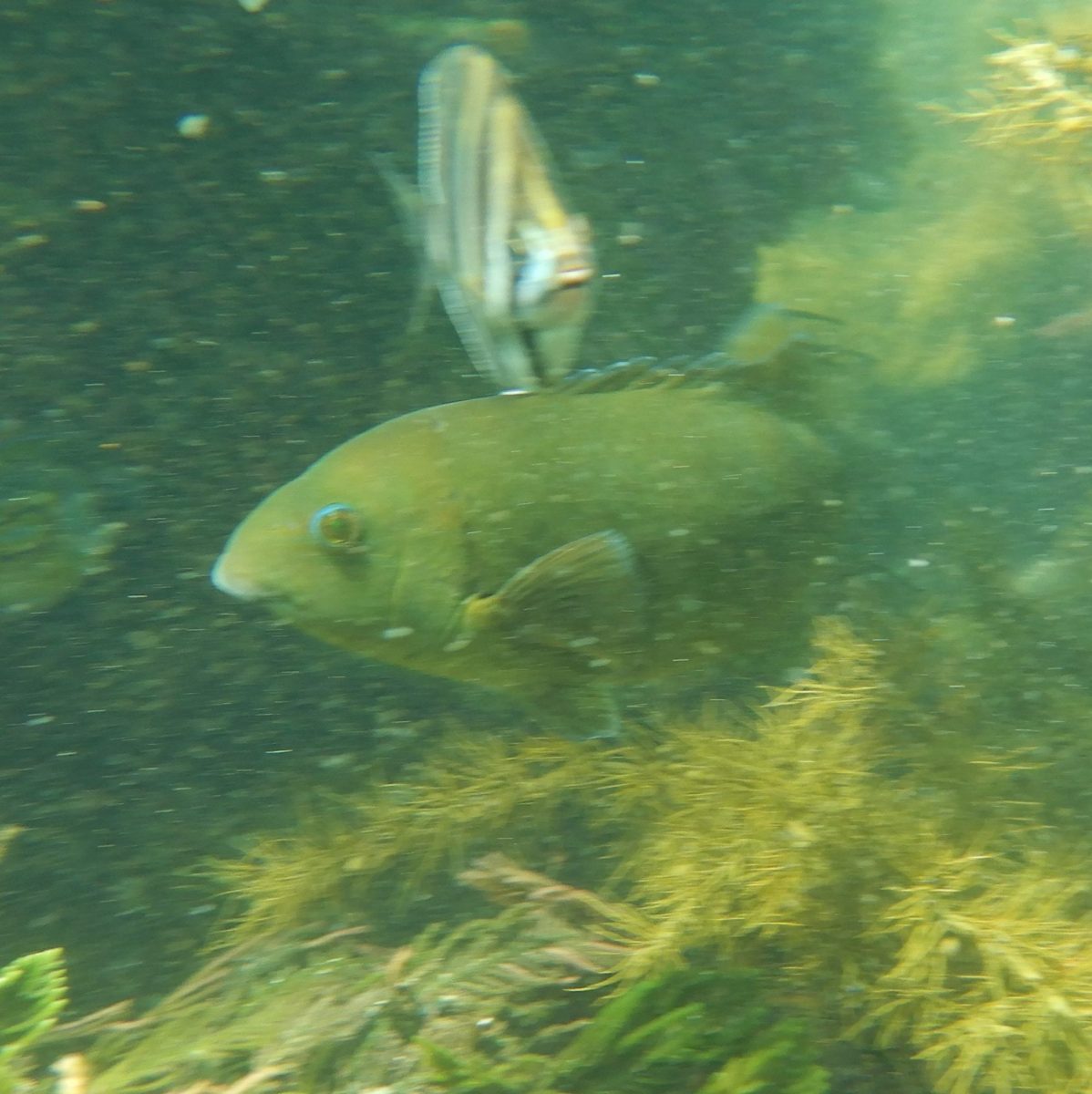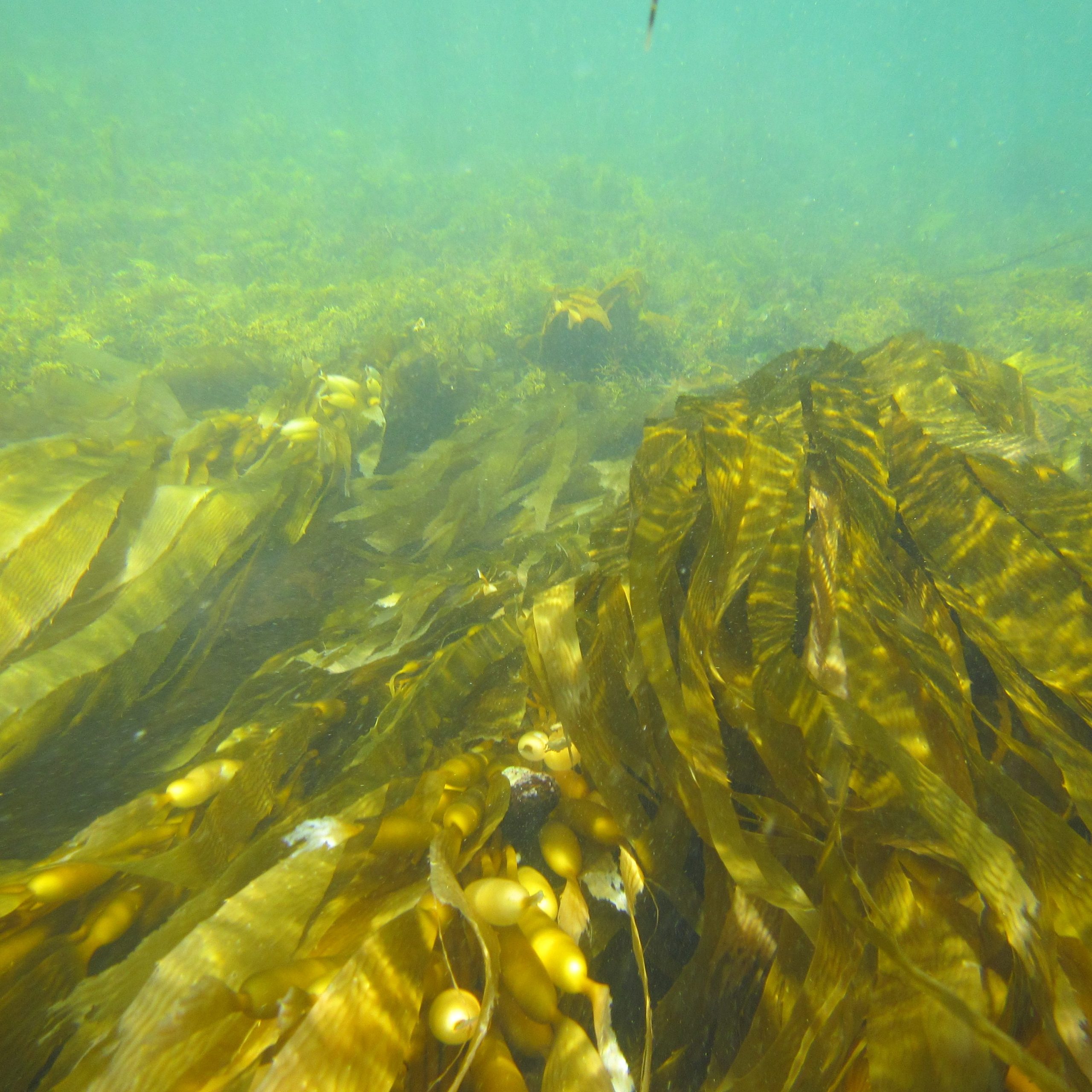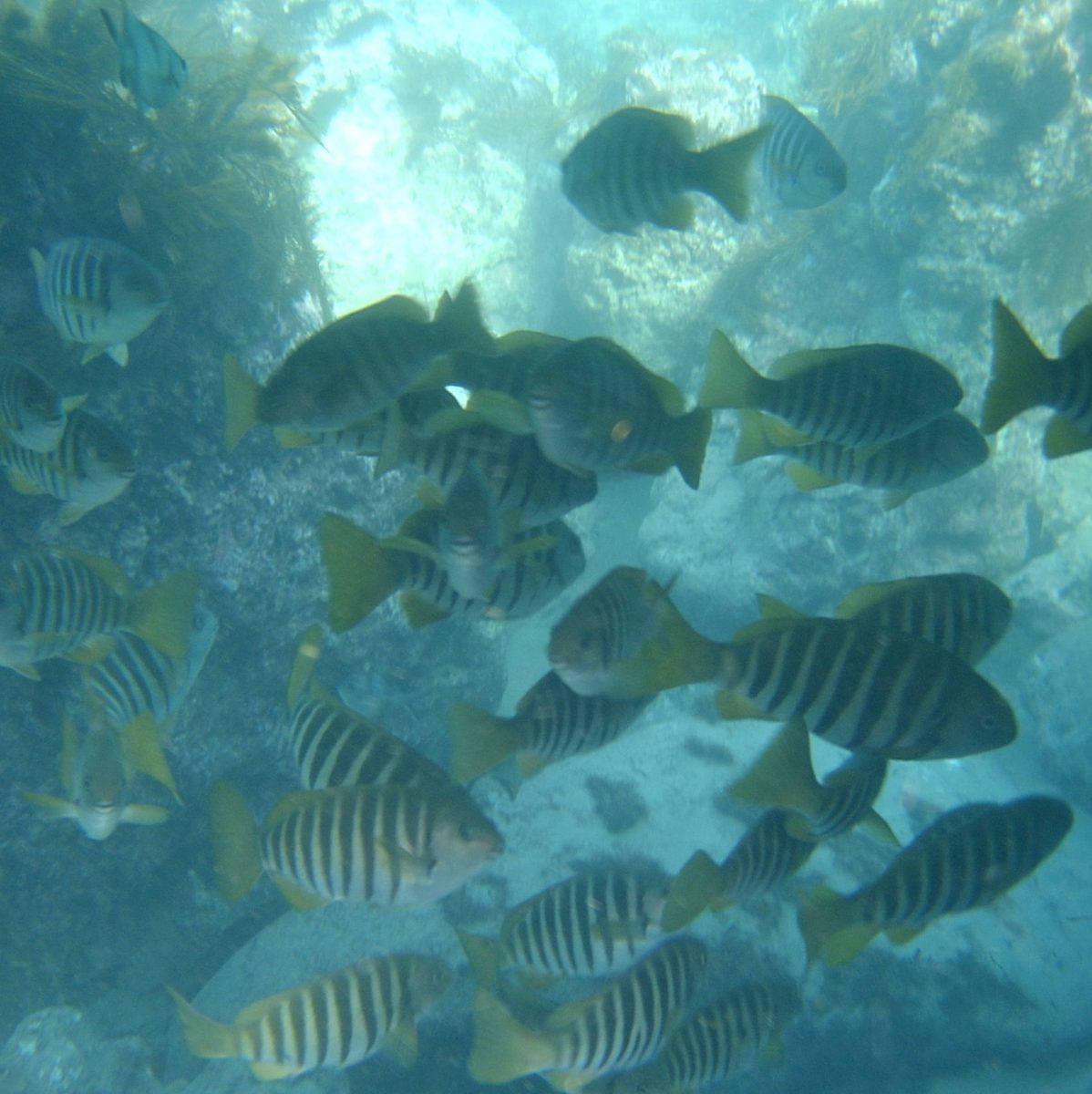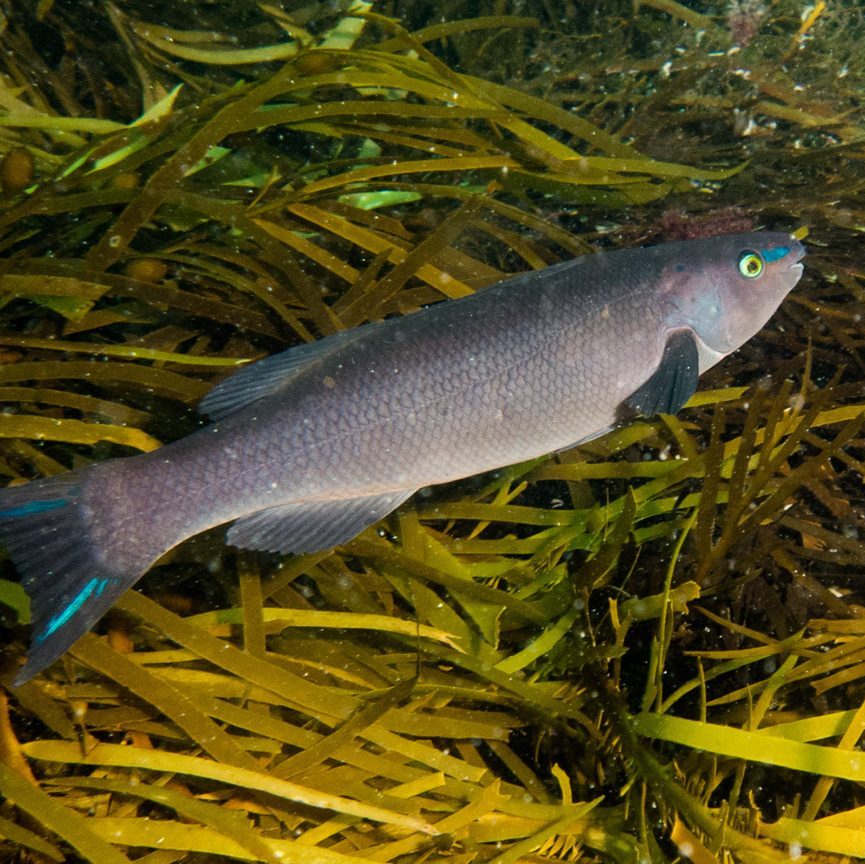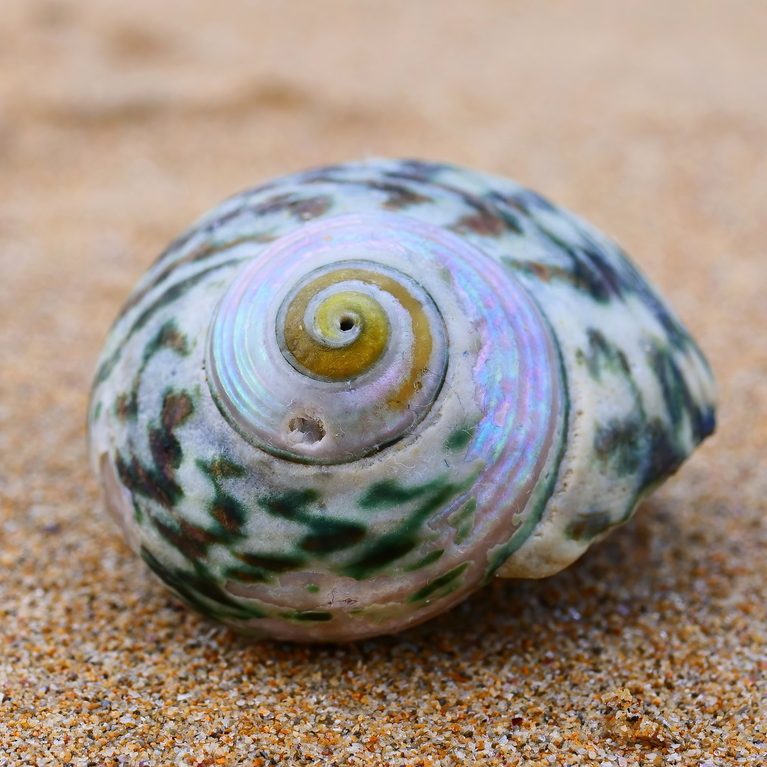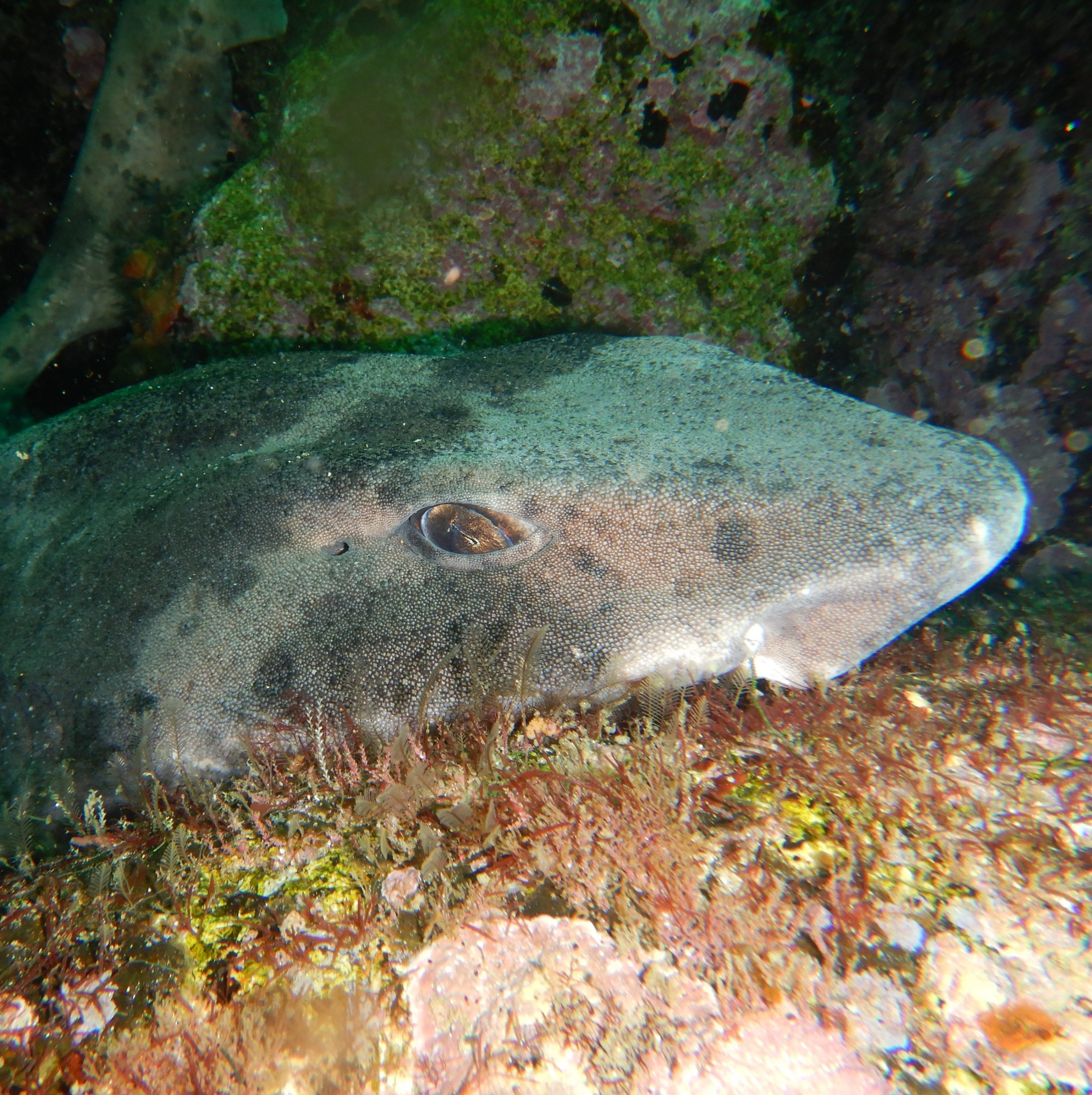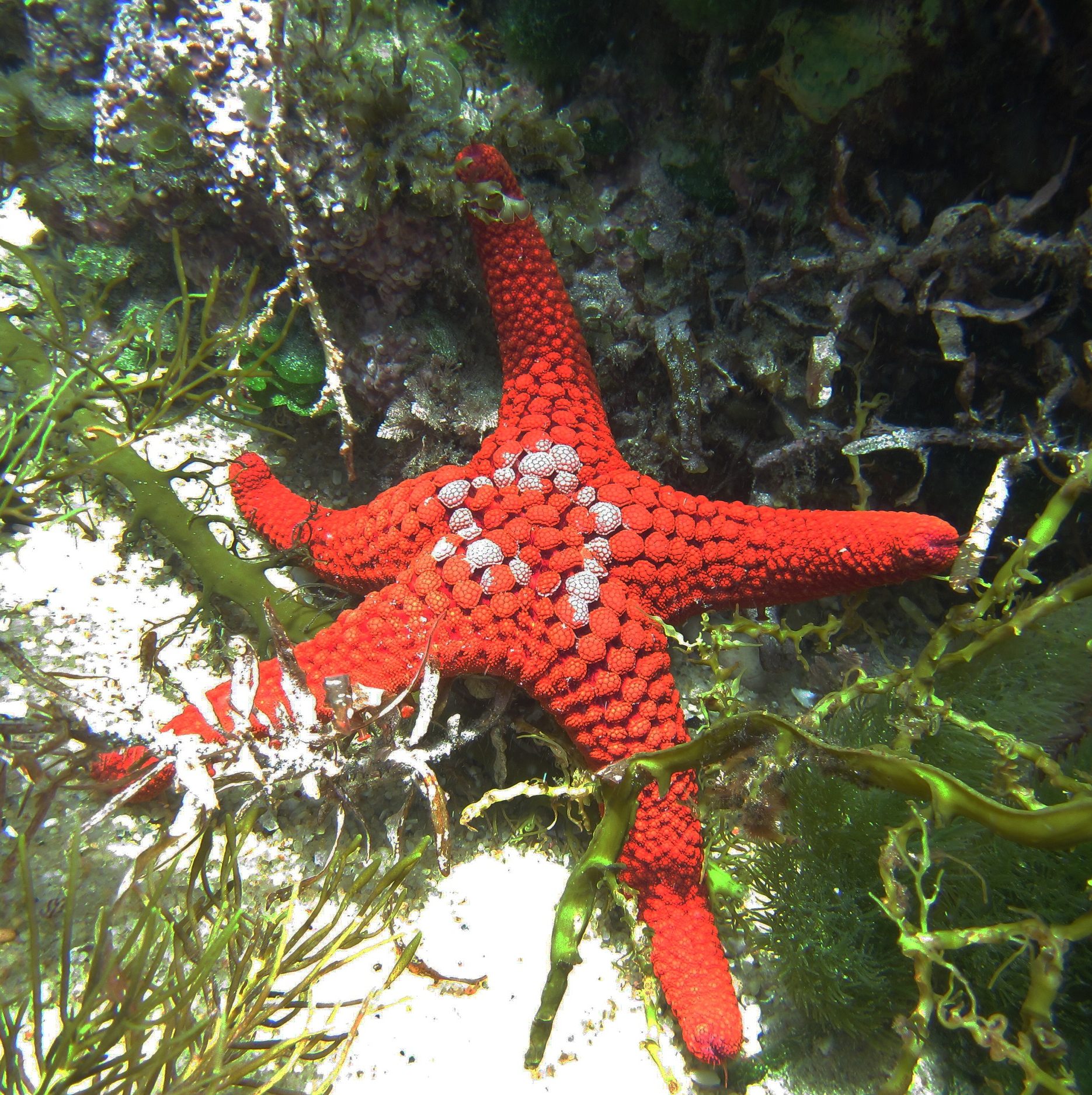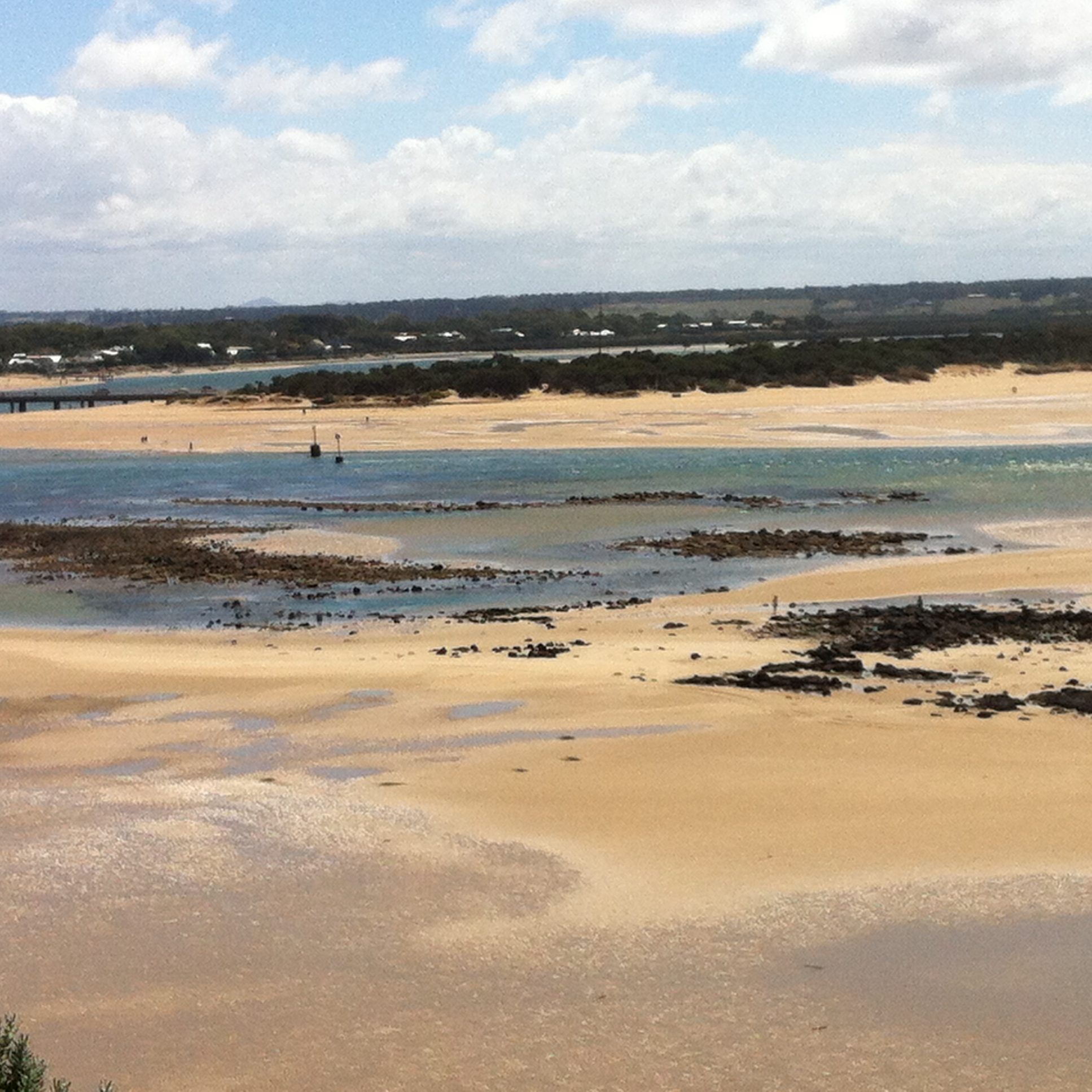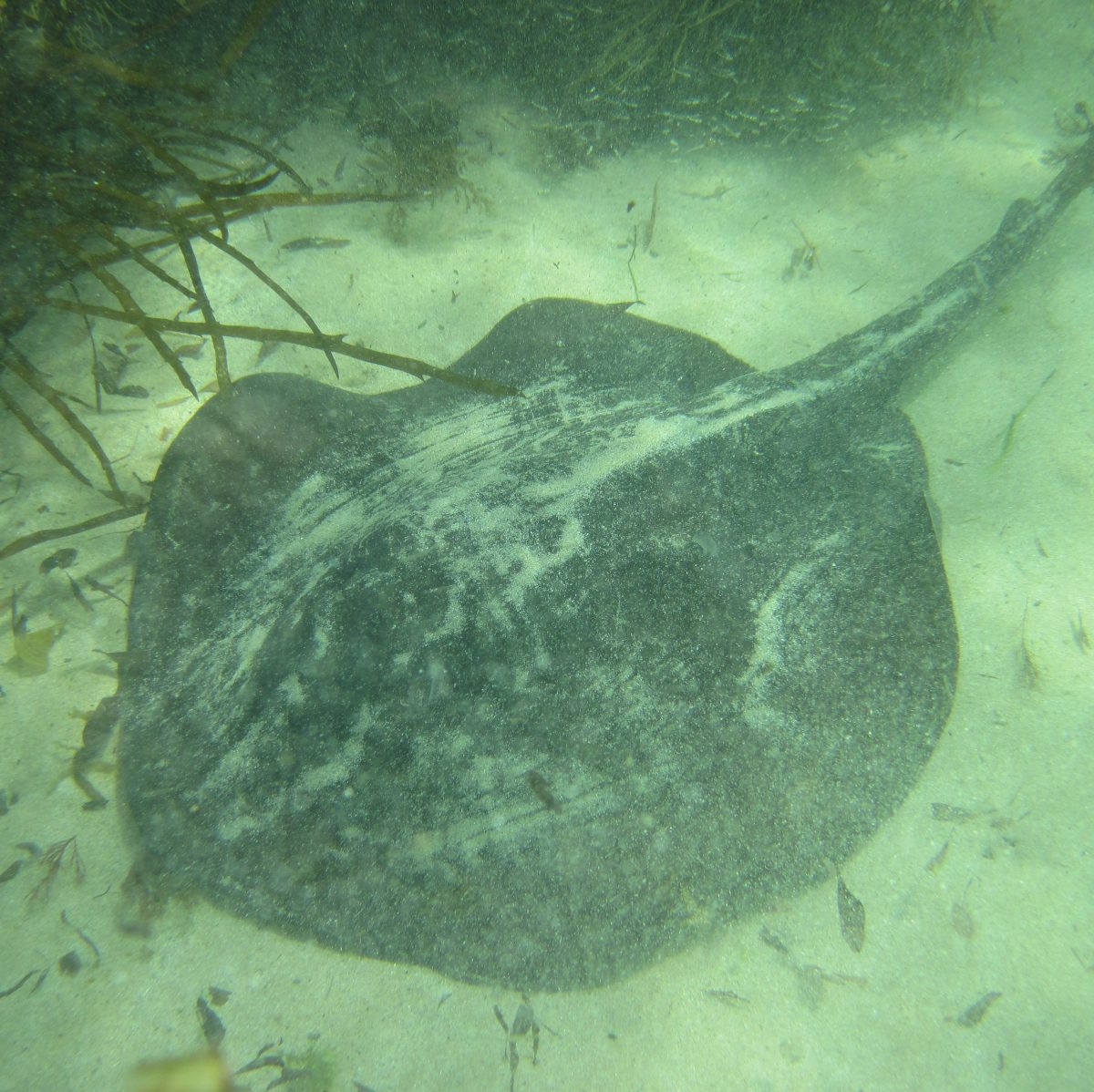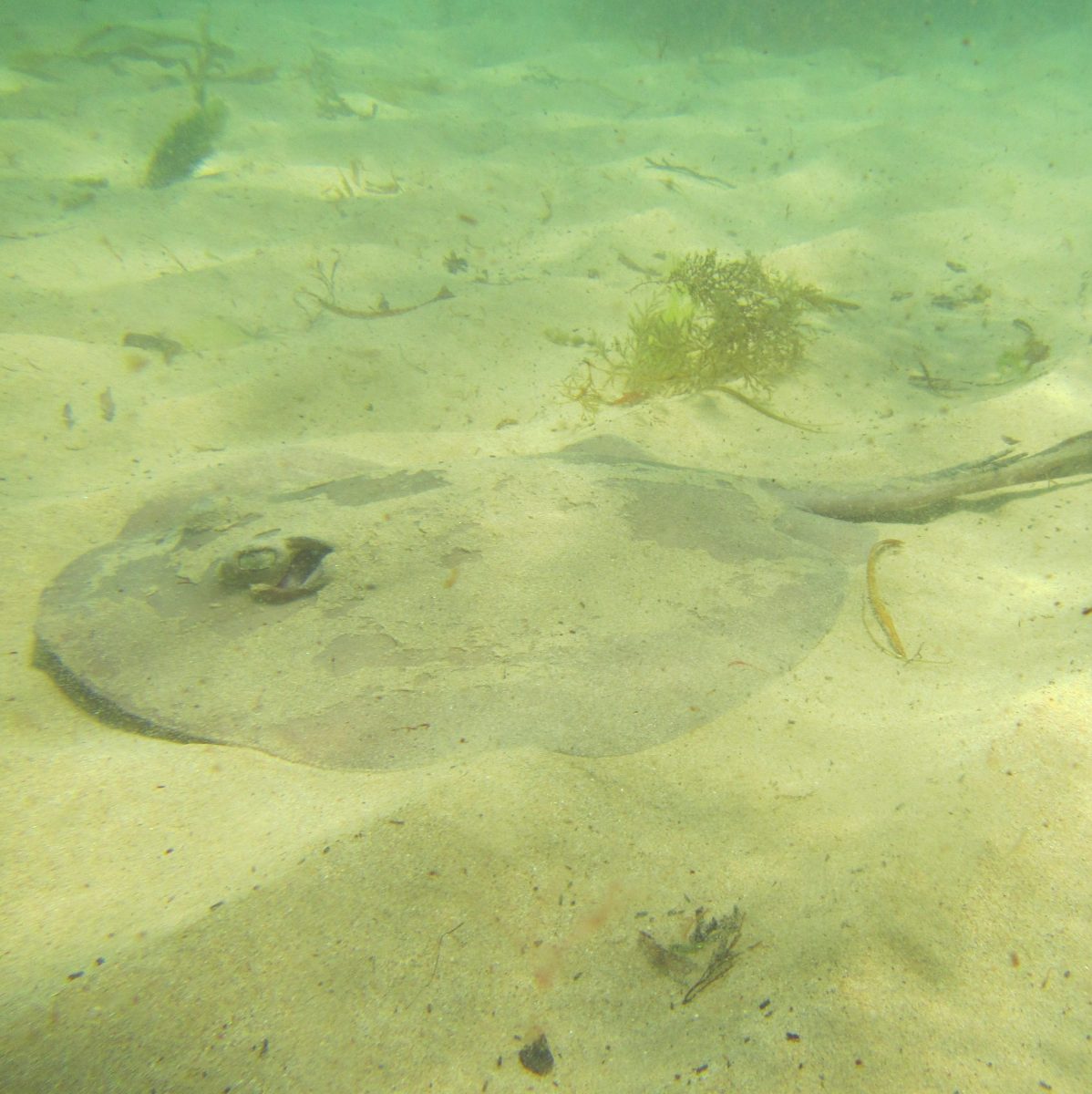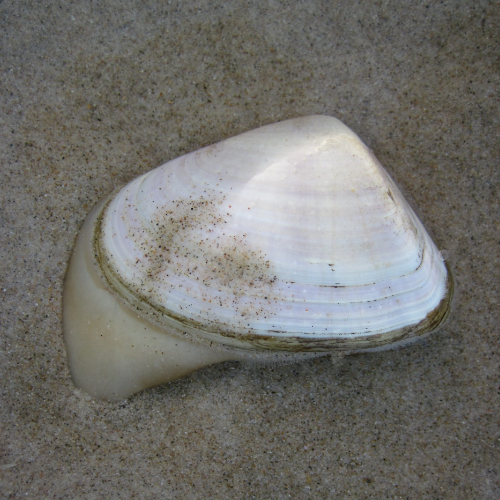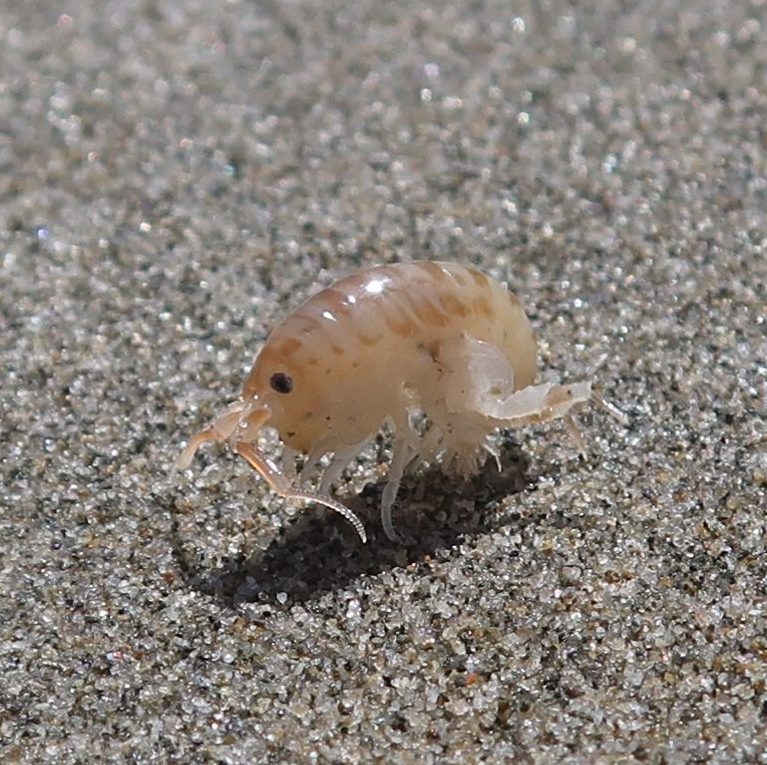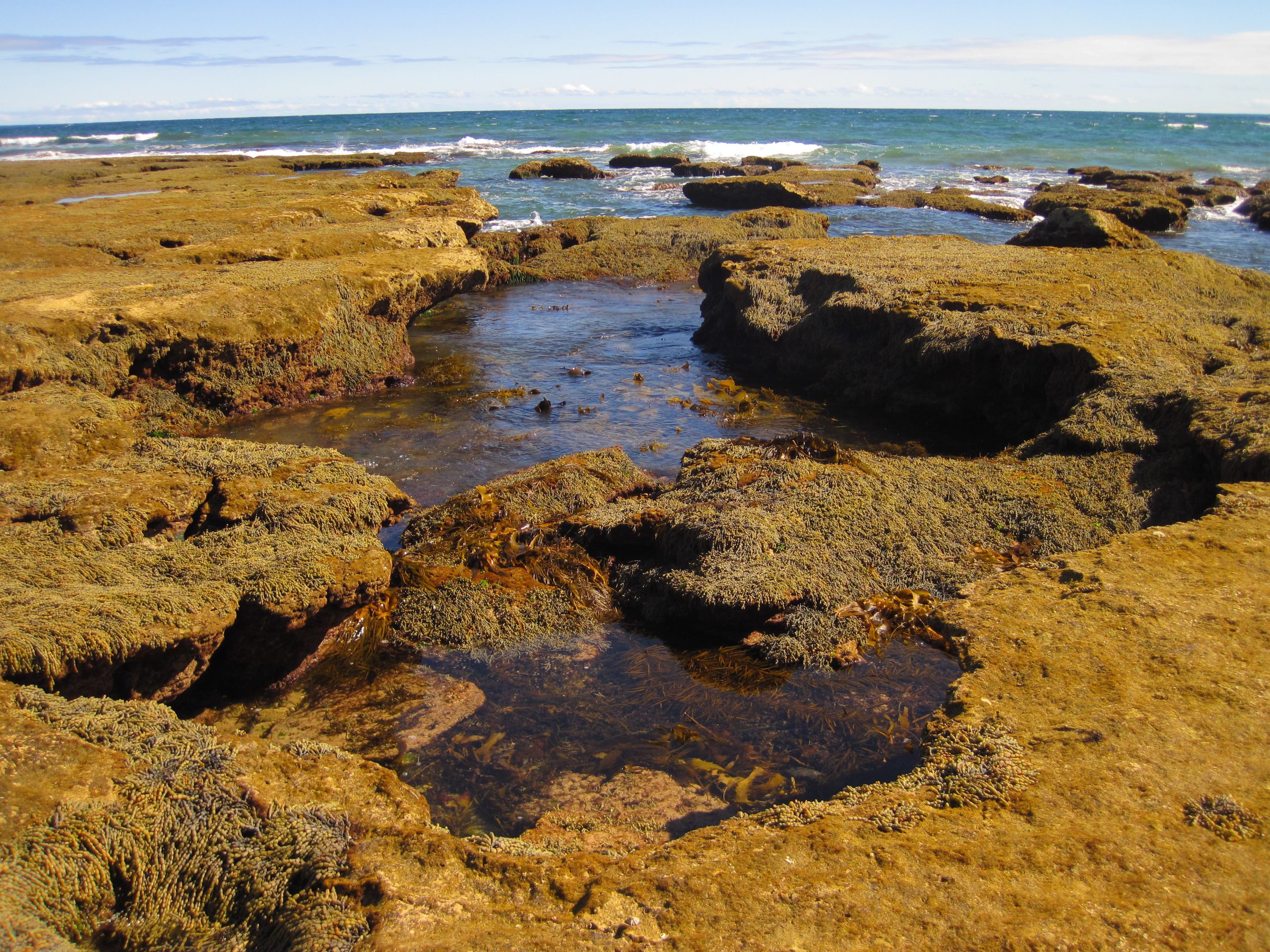
Marine Habitats
The most obvious marine habitats that surround the Bluff are the extensive rocky reefs, some of which are exposed to the air at low tide. Rocky reefs are fascinating habitats that are rich in life as many marine animals and plants need to attach themselves to something solid for their survival.
Reefs are found where rocks occur above or below the waterline. As the rocks are eroded by the action of water cracks and holes appear which increase the availability of shelter for living things. Different rock types weather in different ways and may have different species. Below the low tide mark rocky reefs can support extensive communities of marine plants which can form kelp forests.
Between the reefs are large areas of sand that is made up of the weathered remains of rocks and shells. These areas are constantly moving with waves and currents able to shift large amounts of these soft sediments either onto the beach, or along the coast.
Intertidal Reefs
A major feature of the Barwon Bluff Marine Sanctuary are the extensive intertidal reefs comprised of both volcanic basalt boulders in the east, and large areas of sandstone in the west. These are covered by the sea and then uncovered twice each day. Reefs that are exposed at low tide are great places to explore as there are many animals and several plants that can survive out of the water for some time.
Conditions for living things on these reefs are harsh with these constant changes in their environments being underwater for several hours, and then exposed to the drying effect of sun and wind. Whilst underwater these reefs are pounded by waves and are also feeding areas for predators like fish, whilst at low tide birds come in to feed.
The animals and plants that live here are well suited to these changing environments and have adaptations to help protect them from drying out, from waves, and from predators.
Rocky shore communities are quite variable across Victoria and several types of intertidal reefs can be seen in different areas of the Barwon Bluff Marine Sanctuary. These vary depending on the rock type, the level of exposure to waves, and its weathering, the presence of rockpools, crevices, and boulders, and the presence or absence of predators.
To the east the intertidal reefs are made of basalt which was formed millions of years ago when this area was being covered by lava flows. The basalt has weathered over time to form large boulders with many places for animals to hide. To the west the reefs comprise eroded dune limestone that is mostly flat and continuous but in some places rockpools and ledges have formed that increase habitats available for marine life.
Some common animals found on intertidal rocky reefs include Notched Shore Crabs (Paragrapsus quadridentatus), Carpet Seastars (Meridiastra calcar), Blue Periwinkles (Nodolittorina unifasciata), Smooth Limpets (Cellana tramoserica) and Tube Worms (Galeolaria caespitosa).
Neptune’s Necklace (Homosira banksii) is a common algae found in this habitat.
Subtidal Reefs
Rocky reefs that extend into the sea and that are always covered with water are called subtidal reefs and these can be found right along the coast at Barwon Heads including within the Barwon Bluff Marine Sanctuary.
In shallow areas where there is plenty of sunlight these reefs are mostly covered by algae including large brown algae known as kelp. These areas are often described as kelp forests and are rich in a wide diversity of plants and animals that can be found there.
Reefs that are hidden from sunlight in deeper water, or where sunlight is blocked under ledges, often have brightly coloured communities of invertebrates, many of which rival coral reefs for colour and diversity. These sponge gardens contain many animals that filter their food from the water.
They also provide an excellent site for divers and snorkelers to enjoy and experience a huge range of Victoria’s marine life. These reefs are also help the sustainability of some commercially important species such as abalone and rock lobsters that are protected within the Marine Sanctuary, but whose offspring spread outside the park.
Common animals found on subtidal rocky reefs include Lace Corals (Tryphyllozoon sp.), Tube Sponges (Callyspongia sp.), Eleven-armed Seastars (Coscinasterias muricata), Black-lipped Abalone (Haliotus rubra), Southern Rock Lobstera, (Jasus edwardsii) and Blue Groper (Achoerodus gouldii).
Kelp Forests
Seaweeds that form forests are a special group of large brown algae called kelps. These large plants attach themselves to solid structures such as rock and extend their blades into the waters above them, reaching towards the sunlight.
The large algae in turn create a habitat for smaller algae and a wealth of animals that can either live attached to the rocks beneath the kelps, on the kelps themselves, or in the sheltered waters between individual plants.
In the same way that trees provide shelter and food for many different species, kelp forests are the true forests of the sea.
Because the kelp forest has a dense canopy of blades blocking out light, it can result in shading of the rock surface providing an ideal environment for an understory of encrusting algae and non-moving animals.
Some common algae that form kelp forests within the Barwon Bluff Marine Sanctuary include Bull Kelp (Durvillea potatorum), Crayweed (Phyllospora comosa), and Golden Kelp (Ecklonia radiata).
Some common animals often found in Kelp Forests within the Barwon Bluff Marine Sanctuary include Zebra Fish (Girella zebra), Herring Kale, (Olisthops cyanomelas), Warreners (Turbo undulatus), Draughtboard Sharks (Cephaloscyllium laticeps), and Ocellate Seastar (Nectria ocellata).
Sandy Plains
Sandy habitats are far from being deserts and have a surprising wealth of life.
Many animals such as rays and crabs bury themselves in the sand whilst resting, whilst the small spaces between sand grains are important for a range of small burrowing animals including worms and crustaceans that are food sources for fish and birds.
The beach is another obvious sandy environment and it also provides habitat for animals that live in the sand such as sand hoppers that eat beach washed algae and in turn are important food for birds (at low tide) and fish (at high tide).
Amazing Fact: Scientific surveys have shown that some Victorian sandy environments off Gippsland have the highest levels of animal diversity in the sea ever recorded with over 600 species found in ten square metres!
Some animals that are often found in sandy areas include Smooth Stingrays (Dasyatis brevicaudata), Eastern Shovelnose Stingarees (Trygonoptera imitata), Pipis (Plebidonax deltoides), and Sand Hoppers (Talorchestia sp.).
